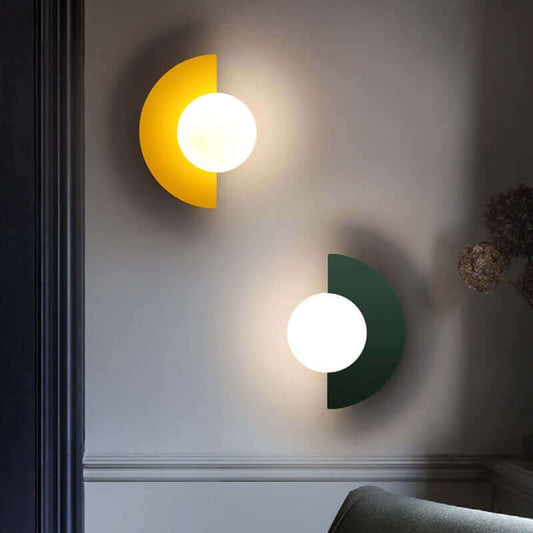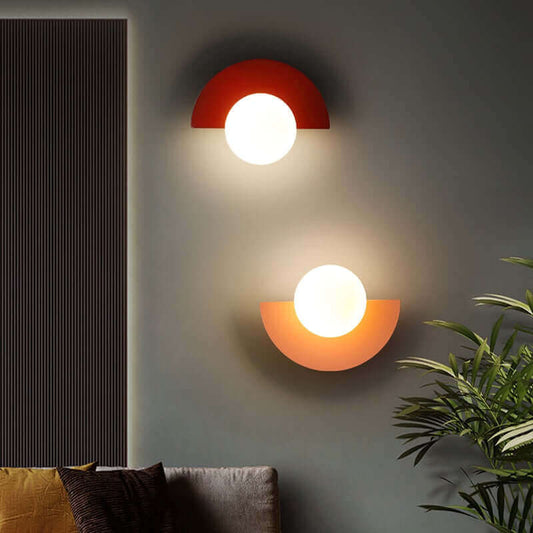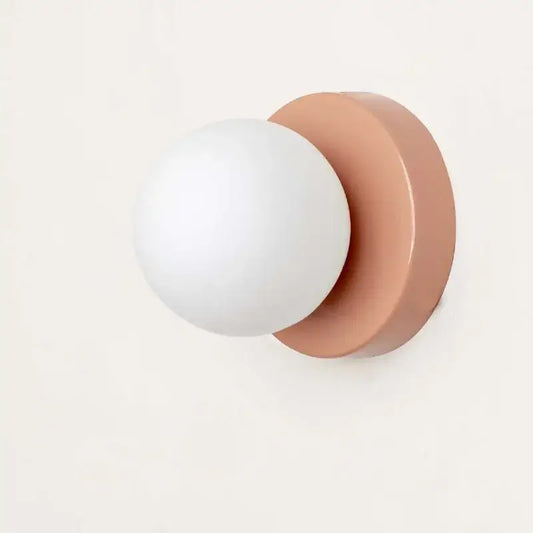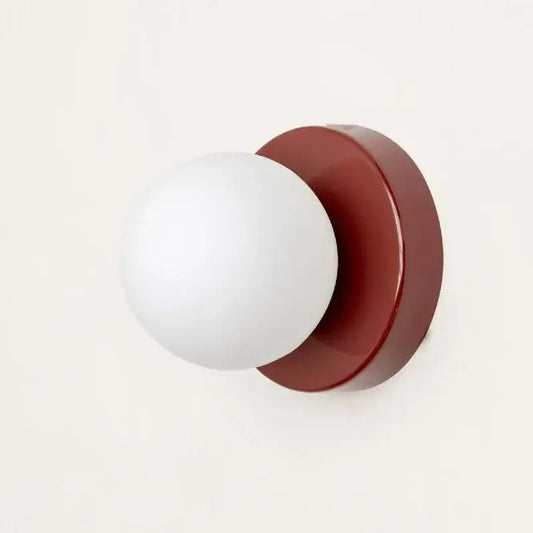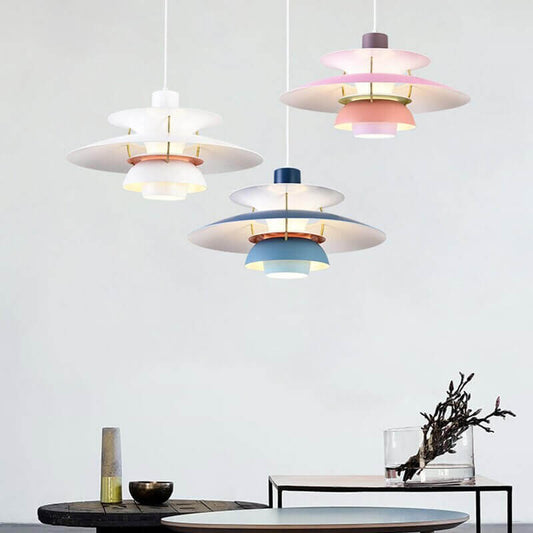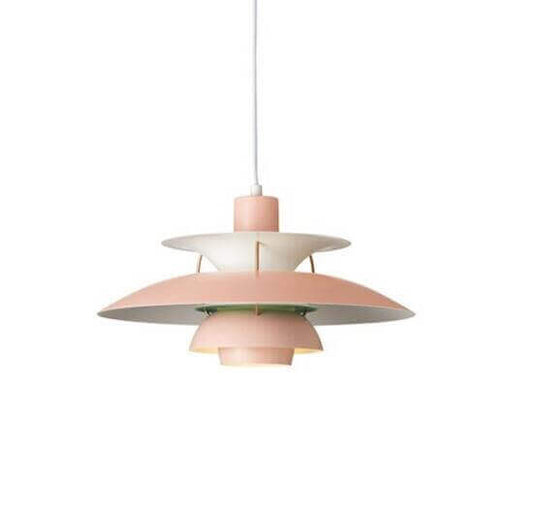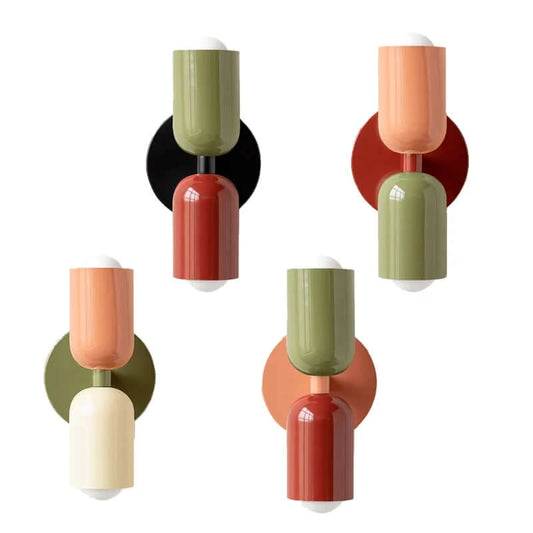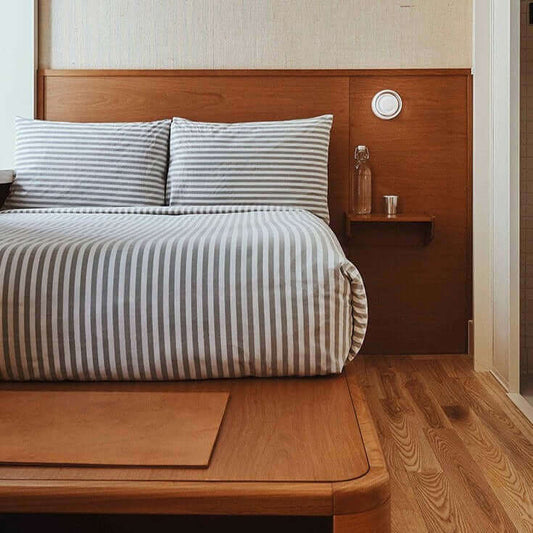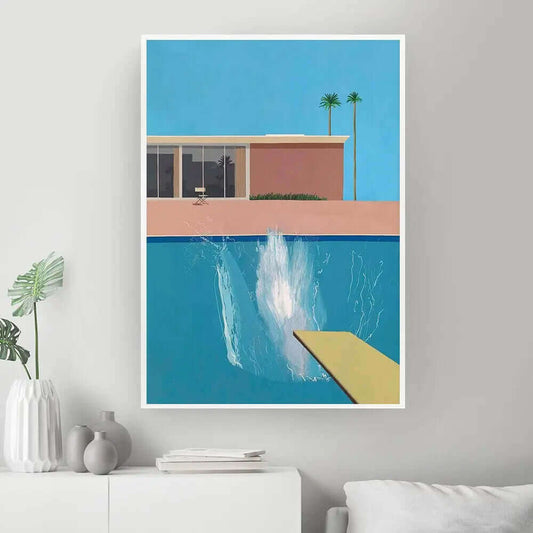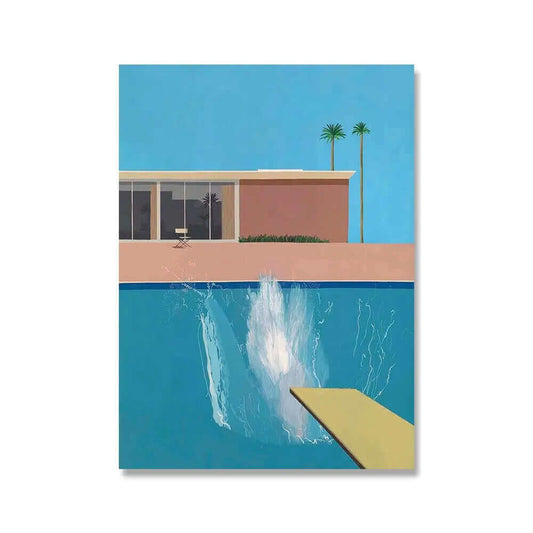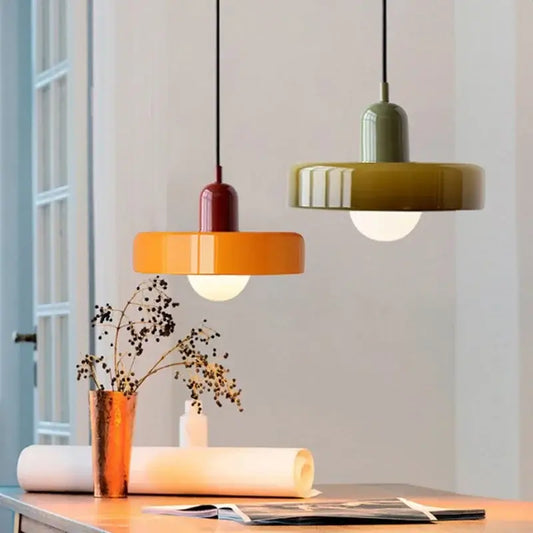Introduction:
Creating a comfortable and aesthetically pleasing living space is the goal of interior design, a discipline that combines art and science to improve the quality of life for those who occupy the space. A well-designed interior can have a significant impact on emotional and psychological well-being, making it a crucial aspect of creating a functional and enjoyable home.
Nauradika's Commitment:
At Nauradika, we understand the importance of interior design in creating a living space that reflects your personal style and enhances your lifestyle. We offer a diverse range of high-quality home decor and lighting options to suit every taste and budget, from modern and contemporary to classic and timeless.
Exceptional Products:
Our commitment to providing exceptional products is at the forefront of everything we do at Nauradika. Our experienced team of designers and artisans work tirelessly to create affordable, visually stunning and functional products that meet the highest standards of quality and durability.
Attention to Detail:
We take pride in our attention to detail and our ability to stay ahead of the latest trends in the industry. Our commitment to excellence has earned us a reputation as a leader in the field of home decor and lighting, and we are dedicated to maintaining that reputation.
Exploring the World of Interior Design:
In this article, we will explore the world of interior design, delving into the use of lighting, color, and material to create a comfortable and visually stunning living space. We will examine the impact that these elements can have on emotional and psychological well-being and how they can be used to achieve a desired aesthetic and ambiance.
Illuminating Your Space: The Importance of Lighting in Interior Design:
Lighting plays a vital role in interior design as it can transform the ambiance and mood of a room. A well-lit space can create a warm and inviting atmosphere, while a poorly lit space can feel dull and uninviting. The use of lighting can be seen as an art form in itself, and it requires a balance between functionality and aesthetics to create the desired effect.
Importance of lighting in creating ambiance and setting the mood:
Lighting can be used to create a variety of moods and atmospheres in a space, from a relaxing and peaceful ambiance to a vibrant and energetic one. The use of dimmers, for example, allows for adjustable lighting levels, which can be used to create the desired mood for different occasions. The right lighting can also highlight certain features of a room, such as artwork, architectural details, or furniture pieces.
Discussion of warm light and its use in modern interior design
Warm light, also known as soft white or warm white, is a type of light that has a yellow or orange hue. It is often used in modern interior design as it creates a cozy and welcoming atmosphere. Warm light can be achieved through the use of incandescent bulbs, LED bulbs, or even candles. It is an excellent option for living rooms, bedrooms, and dining rooms, where a relaxing ambiance is desired.
Importance of choosing the right lighting fixtures for each room
Choosing the right lighting fixtures for each room is crucial in creating the desired effect. For example, a chandelier may be appropriate for a dining room, while a pendant light may be more suitable for a kitchen island. Floor lamps and table lamps can be used to create additional lighting in a living room or bedroom. It is also important to consider the size and style of the lighting fixture to ensure it complements the overall design aesthetic of the room.
Mention of Auxmir Table Lamp and its unique features
The Auxmir Table Lamp is an excellent example of a lighting fixture that combines functionality and aesthetics. It features a touch-sensitive control panel that allows for adjustable brightness levels and color temperatures, making it a versatile option for any room in the house. Its sleek and modern design also adds a touch of elegance and sophistication to any space.
Key Takeaways:
Lighting is an essential element in interior design that can transform a space from dull to inviting. By creating the desired ambiance and highlighting certain features of a room, the right lighting can enhance the overall aesthetic and functionality of the space.
- Lighting is an essential element in interior design that can transform a space from dull to inviting. By creating the desired ambiance and highlighting certain features of a room, the right lighting can enhance the overall aesthetic and functionality of the space.
- When selecting lighting fixtures, it is important to consider the size, style, and purpose of the room to ensure the fixture complements the design aesthetic and provides the desired effect.
- The Auxmir Table Lamp is an excellent option for those seeking a functional and elegant lighting fixture that can adapt to any space.
Exploring the Use of Colors in Interior Design:
Colors play a significant role in interior design, creating a cohesive and visually appealing space. The use of colors can influence mood, evoke emotions, and even affect physical sensations. Choosing the right colors can transform a room from drab to fab, while the wrong color scheme can make a space feel uncomfortable and disjointed. In this article, we will explore the use of different colors in interior design, with a specific focus on pink, gold, grey, beige, red, orange, teal, yellow, baby powder blue, petroleum blue, green, brown, black, white, and purple.
Pink: A Color for All Seasons

Pink is often associated with femininity, but it can be used in many different ways to create a unique and modern space. From soft pastel pinks to bold fuchsia, this color can add warmth and depth to any room. It pairs well with neutral tones such as grey and beige, as well as complementary colors like green and blue. Consider incorporating pink into accent walls, pillows, rugs, or artwork for a subtle pop of color.
Glamorous Gold for a Luxurious Look

Gold is a timeless color that adds a touch of luxury and sophistication to any space. This color is versatile and can be used in many different ways, from metallic accents on furniture to gold leaf finishes on walls. Gold pairs well with bold colors like black and navy, as well as softer shades like pink and ivory. However, it is important to use gold sparingly, as too much of it can be overwhelming.
Cool and Calming Grey

Grey is a versatile and timeless color that can create a cool and calming atmosphere in any room. It pairs well with bold colors like red and yellow, as well as neutral tones like white and beige. Grey can be used in a variety of ways, from wall color to furniture, and accessories. Consider using different shades of grey to create depth and dimension in a space.
Beige: A Classic Neutral

Beige is a classic neutral that can create a warm and inviting atmosphere in any room. It pairs well with a wide variety of colors and can be used as a base color for a more colorful palette. Beige can be used in many ways, from wall color to furniture and accessories. Consider using different shades of beige to create a layered and textured look in a space.
Red and Orange for a Pop of Color

Red and orange are bold and energetic colors that can create a lively and vibrant space. These colors are best used as accent colors, as too much of them can be overwhelming. Consider using red and orange in accessories like throw pillows or artwork to add a pop of color to a neutral palette.
Teal for a Coastal Vibe

Teal is a popular color in coastal interior design, as it creates a calm and serene atmosphere reminiscent of the ocean. It pairs well with natural materials like wood and rattan, as well as other cool colors like blue and green. Consider using teal in accent pieces like curtains, throw blankets, or rugs.
Sunshine Yellow for a Bright and Cheerful Space
 Yellow is a bright and cheerful color that can create a warm and inviting atmosphere in any room. It pairs well with neutral tones like grey and beige, as well as other bright colors like blue and green. Yellow can be used in a variety of ways, from wall color to furniture and accessories. Consider using different shades of yellow to create depth and interest in a space.
Yellow is a bright and cheerful color that can create a warm and inviting atmosphere in any room. It pairs well with neutral tones like grey and beige, as well as other bright colors like blue and green. Yellow can be used in a variety of ways, from wall color to furniture and accessories. Consider using different shades of yellow to create depth and interest in a space.
Baby Powder Blue for a Serene Look
Incorporating Brown

Brown is a neutral color that brings a warm and earthy feel to any living space. It can be used as a dominant color or as an accent to complement other colors. Brown pairs well with other neutral colors such as beige and white, and can also be paired with brighter colors such as yellow and orange. To incorporate brown into your living space, consider adding a brown leather sofa or accent chairs, wooden furniture pieces, or a textured brown rug.
Using Black in Interior Design

Black is a powerful and elegant color that can be used to create a bold and sophisticated atmosphere in any living space. It pairs well with almost any other color and can be used in various ways to create different effects. Black walls can make a room feel cozy and intimate, while black furniture can create a sleek and modern look. To incorporate black into your living space, consider adding black accents such as curtains, throw pillows, or a black accent wall.
Decorating with White

White is a timeless and classic color that can be used to create a clean and bright atmosphere in any living space. It pairs well with any other color and can be used in various ways to create different effects. White walls can make a room feel open and spacious, while white furniture can create a simple and elegant look. To incorporate white into your living space, consider adding white bedding, white curtains, or a white area rug.
Key Takeaways
- Incorporating color into your living space can be a daunting task, but with the right tips and inspiration, it can be a fun and exciting process.
- From the bold and vibrant to the subtle and understated, the use of color in interior design can transform a space and create a cohesive and visually appealing atmosphere.
- By considering the tips and ideas discussed in this article, you can confidently incorporate color into your living space and create a home that reflects your personal style and enhances your lifestyle.
Materials in Interior Design
Ceramic Objects in Interior Design
Wood in Interior Design
Key Takeaways
- The use of different materials in interior design is a key component in creating a unique and personalized living space.
- From the versatility of ceramic objects to the warmth of wood and the boldness of anthracite, each material brings a different texture and feel to a room.
- By considering the overall design aesthetic and color scheme, and using materials strategically, it's possible to create a cohesive and visually appealing living space that reflects your personal style and enhances your lifestyle.
The Impact of Japanese Design on Modern Interior Design
The Influence of Japanese Design
Japanese design has had a significant impact on the world of modern interior design. Its emphasis on simplicity, natural materials, and clean lines has inspired designers and homeowners alike to create a more minimalist and harmonious living space. In this article, we will explore the influence of Japanese design on modern interior design and discuss how you can incorporate Japanese-inspired elements into your own living space.
Minimalism in Japanese Design
One of the most prominent features of Japanese design is its focus on minimalism. This aesthetic is characterized by a simple and uncluttered living space that emphasizes the beauty of natural materials and clean lines. To achieve this look, it is important to keep your space clutter-free and to focus on the essential elements of your decor. This means choosing furniture and decor that serve a purpose and eliminating anything that is unnecessary.
Natural Materials in Japanese Design
Another key feature of Japanese design is its emphasis on natural materials. Wood, bamboo (used extensively in Feng Shui), and stone are all commonly used in Japanese-inspired interiors to create a warm and inviting living space. To incorporate natural materials into your own home, consider using wood furniture, bamboo shades, or stone accent pieces.
Clean Lines in Japanese Design
Japanese design also places a strong emphasis on clean lines. This means using simple, geometric shapes and avoiding anything that is overly ornate or fussy. To achieve this look, consider using furniture and decor with clean, straight lines and avoiding anything that is overly decorative or ornate.
How to Incorporate Japanese-Inspired Design into Your Living Space
If you are interested in incorporating Japanese-inspired design into your living space, there are a few key elements to keep in mind. First, focus on simplicity and minimalism, keeping your space uncluttered and emphasizing the essential elements of your decor. Second, incorporate natural materials like wood, bamboo, and stone to create a warm and inviting atmosphere. Finally, focus on clean lines and simple, geometric shapes to create a harmonious and balanced living space.
Key Takeaways
- Incorporating Japanese-inspired design elements into your living space can help create a more harmonious and relaxing atmosphere.
- By focusing on simplicity, natural materials, and clean lines, you can create a space that is both beautiful and functional.
- Whether you are looking to redesign your entire home or simply add a few Japanese-inspired touches, the principles of Japanese design can help guide you towards a more harmonious and balanced living space.
Interior Design Trends Through the Decades
Interior design trends have been shaped by cultural, social, and technological advancements throughout history. From the 1950s to the present day, various design styles have come and gone, leaving their mark on the world of interior design. In this article, we will take a look at the interior design trends of the 1950s, 1970s, and 1980s in America and Europe, and how they have influenced modern interior design.
The 1950s: Mid-Century Modern
The 1950s marked the rise of Mid-Century Modern style, characterized by clean lines, minimalist design, and the use of natural materials such as wood and leather. This style was popularized by designers such as Charles and Ray Eames, who created iconic pieces such as the Eames Lounge Chair and the Eames Dining Chair. Mid-Century Modern style also featured bold colors such as turquoise, orange, and olive green, which added a playful touch to the otherwise simple and sleek design. Not that we also have a very good article on How to incorporate the Bauhaus in your home decor! Although the bauhaus was not a 50s movement, it strongly influenced the aesthetics of Mid-Century Modern designers.
The 1970s: Bohemian and Disco
The 1970s was a decade of cultural and social change, which was reflected in interior design. The Bohemian style emerged as a rejection of the strict formality of Mid-Century Modern, emphasizing a free-spirited and unconventional approach to design. This style featured colorful textiles, ethnic patterns, and a mix of vintage and new furniture pieces. On the other hand, the Disco era brought a flashy and glamorous approach to interior design, featuring mirrored surfaces, metallic accents, and bold colors such as pink, purple, and blue.
The 1980s: Postmodernism and Memphis Design
The 1980s was a decade of postmodernism, which was characterized by a rejection of the strict modernist principles of the previous decades. Postmodernism embraced a playful and eclectic approach to design, featuring a mix of styles, colors, and patterns. This style was popularized by designers such as Ettore Sottsass and his Memphis Group, who created furniture pieces that were bold, colorful, and whimsical. Memphis Design featured bright colors, geometric shapes, and unusual materials such as plastic and laminates.
Influence on Modern Interior Design
These design trends of the past have had a significant influence on modern interior design. Mid-Century Modern style has made a comeback in recent years, with many designers and homeowners embracing its simple and timeless aesthetic. The Bohemian style of the 1970s has also influenced modern interior design, with many designers incorporating vintage and eclectic pieces into their designs. Postmodernism has also left its mark on modern interior design, with designers playing with color, pattern, and material to create playful and unconventional spaces.
Key Takeaways
- Interior design trends have been shaped by the cultural, social, and technological advancements of their time.
- The design styles of the 1950s, 1970s, and 1980s have influenced modern interior design, with designers and homeowners embracing their unique aesthetic and incorporating them into their designs.
- Whether it's the simplicity of Mid-Century Modern, the free-spirited Bohemian style, or the playful postmodernism of Memphis Design, these design trends have left a lasting impression on the world of interior design.
Scandinavian design
Scandinavian design has had a profound impact on the world of interior design. Known for its simplicity, functionality, and minimalism, Scandinavian design has become synonymous with modern design. In this article, we will explore the world of Scandinavian interior design and highlight some of the key designers who have made significant contributions to the field.
Defining Scandinavian Design:
Before delving into the work of individual designers, it is important to define what we mean by Scandinavian design. The term refers to a design aesthetic that emerged in the Nordic countries in the early 20th century. It emphasizes functionality, simplicity, and minimalism, and is characterized by the use of natural materials, such as wood and stone, and a muted color palette. Scandinavian design has become popular around the world, with many designers and furniture manufacturers embracing this aesthetic.
Alvar Aalto
One of the most influential Scandinavian designers of the 20th century is Alvar Aalto. A Finnish architect and designer, Aalto is known for his innovative use of materials and his commitment to functional design. His furniture designs, in particular, are highly sought after and are still being produced today. Aalto's work has had a significant impact on modern interior design, with many designers and architects citing him as a major influence.
Arne Jacobsen
Another prominent figure in Scandinavian design is Arne Jacobsen. Jacobsen was a Danish architect and designer who is best known for his furniture designs, including the iconic Egg and Swan chairs. He was also a proponent of functionalism and modernism and is credited with helping to shape the Scandinavian design aesthetic. Jacobsen's work continues to be popular today and has had a lasting impact on the field of interior design.
Hans Wegner
Hans Wegner was a Danish furniture designer who is known for his elegant and simple designs. He worked primarily with wood and is credited with helping to popularize Danish modern furniture. Wegner's furniture designs are highly regarded for their quality craftsmanship and timeless aesthetic. Many of his designs are still being produced today, and his work has had a significant impact on the world of interior design.
Poul Henningsen
Poul Henningsen was a Danish designer and writer who is best known for his lighting designs. He was a pioneer in the use of layered lighting and is credited with developing the PH lamp, which is still being produced today. Henningsen's lighting designs are highly regarded for their functional and aesthetic qualities, and they continue to be popular among designers and architects around the world.
Key Takeaways
- Scandinavian design has had a significant impact on the world of interior design, and the work of key designers such as Alvar Aalto, Arne Jacobsen, Hans Wegner, and Poul Henningsen has played an important role in shaping this aesthetic.
- By emphasizing functionality, simplicity, and natural materials, Scandinavian design has become a popular choice for designers and homeowners alike.
The Atomic Age in Interior Design
The Atomic Age, also known as the Space Age, was a period of time in the mid-20th century marked by significant advancements in science and technology, particularly in the fields of nuclear power and space exploration. These developments had a profound impact on many aspects of life, including art, fashion, and interior design. In this article, we will explore the impact of the Atomic Age on interior design, focusing on the use of futuristic designs, bright colors, and new materials during this time period.
Futuristic Designs
During the Atomic Age, there was a growing fascination with the future and what it might hold. This led to the creation of many futuristic designs in interior design, characterized by sleek, streamlined shapes and a minimalistic approach to decoration. Designers like Charles and Ray Eames and Verner Panton were at the forefront of this movement, creating furniture and home accessories that were not only functional but also visually striking.
Bright Colors
Another hallmark of the Atomic Age was the use of bright colors in interior design. The optimism and excitement of the time were reflected in the use of colors like orange, yellow, and turquoise. These bold hues were often paired with neutral shades like gray or white to create a balanced and visually appealing space.
New Materials
Advancements in technology during the Atomic Age also led to the development of new materials that revolutionized interior design. Plastics, for example, were used in a wide range of applications, from furniture to wall coverings to kitchen appliances. Other materials, like chrome and stainless steel, were used to create a sleek, modern look in home decor.
Impact on Modern Interior Design
The Atomic Age had a significant impact on modern interior design, as many of the elements introduced during this time period continue to be popular today. The use of futuristic designs, bright colors, and new materials can be seen in many contemporary interior design styles, from mid-century modern to contemporary. Designers continue to draw inspiration from the Atomic Age, incorporating its bold and innovative spirit into their work.
Key Takeaways
- The Atomic Age was a time of great change and innovation in many areas of life, including interior design.
- The use of futuristic designs, bright colors, and new materials revolutionized the way we think about home decor, and the impact of this period continues to be felt today.
- As we look to the future, it is clear that the Atomic Age will continue to inspire and influence the world of interior design for years to come.
The Legacy of Le Corbusier and Alvar Alto in Interior Design
Interior design is a constantly evolving field that has been influenced by various designers and architects throughout history. Two of the most prominent figures in the field are Le Corbusier and Alvar Alto. These architects and designers made significant contributions to the world of interior design, and their impact can still be seen in modern design today.
Le Corbusier's Impact on Interior Design
Le Corbusier was a Swiss-French architect and designer who played a significant role in the development of modern architecture and design. He was known for his emphasis on functionality and his use of clean, simple lines. Le Corbusier's furniture designs were particularly notable for their modernity and minimalism.
The Influence of Le Corbusier on Modern Design
Le Corbusier's influence can be seen in modern interior design in a variety of ways. His emphasis on functionality and simplicity has inspired designers to create streamlined and practical living spaces. Additionally, his use of materials like chrome and steel in furniture design has been incorporated into many modern pieces. And he of course had an influence on art in general.
Alvar Alto's Impact on Interior Design
Alvar Alto was a Finnish architect and designer who is best known for his furniture designs. His work was characterized by a focus on functionality, durability, and simplicity. Alto believed that furniture should be designed to be comfortable and practical above all else.
The Influence of Alvar Alto on Modern Design
Alvar Alto's influence can be seen in modern interior design in a number of ways. His emphasis on functionality and simplicity has been embraced by many modern designers, who seek to create practical and comfortable living spaces. Additionally, his use of natural materials like wood and his commitment to sustainability has been incorporated into many modern designs.
Combining Le Corbusier and Alvar Alto's Styles
While Le Corbusier and Alvar Alto had distinct design styles, their work shared a common emphasis on functionality and simplicity. Many modern designers have sought to combine these two styles in their work, creating living spaces that are both practical and aesthetically pleasing.
Key Takeaways
Le Corbusier and Alvar Alto made significant contributions to the field of interior design, and their influence can still be seen in modern design today. Their emphasis on functionality and simplicity has inspired countless designers, who continue to create living spaces that are both practical and beautiful. Whether you're a fan of modern design or prefer a more traditional approach, the legacy of these two designers continues to shape the way we think about interior design.
Learning About Interior Design in 2023
Interior design is an ever-evolving field that requires a continuous commitment to learning and staying up-to-date with the latest trends and techniques. Whether you are a seasoned designer or just starting, there are numerous resources available to help you stay ahead of the game. In this article, we will explore some of the best resources available for learning about interior design in 2023, including Nauradika's commitment to providing high-quality home decor and lighting options.
Overview of resources for learning about interior design
One of the best ways to learn about interior design is through online courses and tutorials. There are numerous websites and platforms available, such as Skillshare, Udemy, and Coursera, that offer courses on everything from the basics of design to more advanced topics like color theory and lighting design. These courses are usually self-paced, making them a great option for busy professionals or those with busy schedules.
Another great resource for learning about interior design is through books and publications. There are countless books on the subject, ranging from beginner's guides to more advanced topics. Some popular titles include "The Elements of Style" by Erin Gates and "Domino: The Book of Decorating" by Deborah Needleman. There are also a variety of design publications, both online and in print, that offer inspiration and insights into the world of interior design.
In addition to online courses and books, attending industry events and trade shows can also be a valuable learning experience. These events offer the opportunity to see the latest trends and products in person, as well as to network with other designers and industry professionals. Some popular industry events include the High Point Market in North Carolina and the Maison et Objet trade show in Paris.
Whether you are just starting out in the world of interior design or are a seasoned professional, there are countless resources available to help you stay ahead of the game. From online courses and books to industry events and trade shows, there are many ways to learn about the latest trends and techniques in interior design. And if you're looking for high-quality home decor and lighting options, be sure to check out Nauradika – we're committed to helping you create a beautiful and comfortable living space that reflects your personal style and enhances your lifestyle.
Our take on "Enhancing Your Living Space: The Importance of Interior Design"
- Interior design is a vital aspect of creating a comfortable and visually appealing living space.
- The use of lighting, color, material, and layout can greatly impact the atmosphere of a room.
- Nauradika provides a wide range of high-quality home decor and lighting options to help individuals achieve their desired aesthetic and ambiance.
- With the right design elements and products, individuals can transform their living space into a welcoming and beautiful environment that reflects their personal style and enhances their lifestyle. Whether it is incorporating warm lighting, adding pops of color, or using natural materials, interior design offers endless possibilities for creating a personalized and comfortable home.






